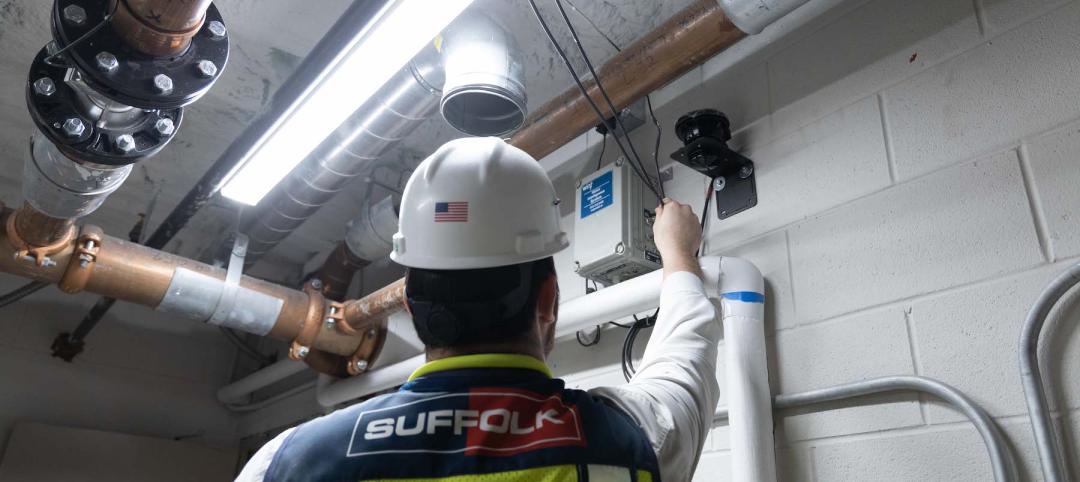Trade labor shortages. Thinner margins. Tighter schedules. Quality control issues. Weather events. Increased complexity. Safety concerns. There is a laundry list of reasons why general contractors, construction managers, and subcontractors should be jumping in with both feet to adopt prefabrication on projects.
Many of the nation’s largest contractors, including Gilbane, Mortensen, Skanska, and Turner, have been utilizing prefab techniques on select projects for a decade or more. Mortensen, in a 2014 study, even quantified the cost and schedule savings from select prefab approaches—exterior panel walls, bathroom pods, multi-trade racks, patient room headwalls—implemented on a Denver hospital project. The company’s conclusion: For every dollar it spent on prefab, 13% of the investment was returned as a “quantifiable benefit to the project”—through schedule and cost certainty, improved productivity, fewer safety incidents, and manpower consistency. That’s a 1.13 benefit-to-cost ratio. Not too shabby.
Yet the prefab movement—while growing—has been relatively slow to take hold in a big way in the U.S. construction market, especially among GCs and CMs, according to a newly released joint study by FMI and BIM Forum.
Of the 156 firms surveyed for the report, nearly three-quarters (74%) indicated that they use some level of prefab on select projects. Solid adoption rate, right?
Now look at the numbers based on the volume of project work. Just 23% of respondents use prefab assemblies on more than half of their projects, and less than a third (32%) utilize the process on 21-50% of their firm’s projects.
Shockingly, among the firms that have adopted prefab construction, the overwhelming majority (86%) admit that the process is either “not effective” or “needs improvement.”
Even the most ardent users of prefab concede that the movement, for most firms, is still in the R&D phase. Construction teams don’t have the luxury of repetition. Each project comes with a different set of circumstances—location, client, project team, building program requirements, cost restraints, and schedule demands.
Trial and error testing requires multiple projects spanning several years to see what works and what doesn’t. Early prefab adopters like Birmingham, Ala.-based Golden Construction are just coming out of that cycle. “Ten years ago, we were just trying to prove that prefabrication worked,” the firm’s President Geoffrey Golden told FMI. “Today, the conversations have shifted to, ‘Just how much can we impact projects’ bottom line and schedule?’”
Mastering prefab, say the authors of the FMI/BIM Forum report, requires a top-down commitment to the process, a willingness to fail and try again, and an “all or nothing” mindset. Dabbling in prefab often turns into an expensive mistake.
Related Stories
Mass Timber | May 3, 2023
Gensler-designed mid-rise will be Houston’s first mass timber commercial office building
A Houston project plans to achieve two firsts: the city’s first mass timber commercial office project, and the state of Texas’s first commercial office building targeting net zero energy operational carbon upon completion next year. Framework @ Block 10 is owned and managed by Hicks Ventures, a Houston-based development company.
AEC Tech | May 1, 2023
Utilizing computer vision, AI technology for visual jobsite tasks
Burns & McDonnell breaks down three ways computer vision can effectively assist workers on the job site, from project progress to safety measures.
Design Innovation Report | Apr 27, 2023
BD+C's 2023 Design Innovation Report
Building Design+Construction’s Design Innovation Report presents projects, spaces, and initiatives—and the AEC professionals behind them—that push the boundaries of building design. This year, we feature four novel projects and one building science innovation.
Building Technology | Apr 24, 2023
Let’s chat about AI: How design and construction firms are using ChatGPT
Tech-savvy AEC firms that already use artificial intelligence to enhance their work view the startling evolution of ChatGPT mostly in a positive light as a potential tool for sharing information and training employees and trade partners. However, the efficacy of ChatGPT is likely to rest on the construction industry’s aggregation of quality data that, until recently, has been underwhelming for getting the greatest bang from AI and machine learning.
Design Innovation Report | Apr 19, 2023
HDR uses artificial intelligence tools to help design a vital health clinic in India
Architects from HDR worked pro bono with iKure, a technology-centric healthcare provider, to build a healthcare clinic in rural India.
3D Printing | Apr 11, 2023
University of Michigan’s DART Laboratory unveils Shell Wall—a concrete wall that’s lightweight and freeform 3D printed
The University of Michigan’s DART Laboratory has unveiled a new product called Shell Wall—which the organization describes as the first lightweight, freeform 3D printed and structurally reinforced concrete wall. The innovative product leverages DART Laboratory’s research and development on the use of 3D-printing technology to build structures that require less concrete.
Contractors | Apr 10, 2023
What makes prefabrication work? Factors every construction project should consider
There are many factors requiring careful consideration when determining whether a project is a good fit for prefabrication. JE Dunn’s Brian Burkett breaks down the most important considerations.
Smart Buildings | Apr 7, 2023
Carnegie Mellon University's research on advanced building sensors provokes heated controversy
A research project to test next-generation building sensors at Carnegie Mellon University provoked intense debate over the privacy implications of widespread deployment of the devices in a new 90,000-sf building. The light-switch-size devices, capable of measuring 12 types of data including motion and sound, were mounted in more than 300 locations throughout the building.
Cladding and Facade Systems | Apr 5, 2023
Façade innovation: University of Stuttgart tests a ‘saturated building skin’ for lessening heat islands
HydroSKIN is a façade made with textiles that stores rainwater and uses it later to cool hot building exteriors. The façade innovation consists of an external, multilayered 3D textile that acts as a water collector and evaporator.
Project + Process Innovation | Mar 22, 2023
Onsite prefabrication for healthcare construction: It's more than a process, it's a partnership
Prefabrication can help project teams navigate an uncertain market. GBBN's Mickey LeRoy, AIA, ACHA, LEED AP, explains the difference between onsite and offsite prefabrication methods for healthcare construction projects.
















